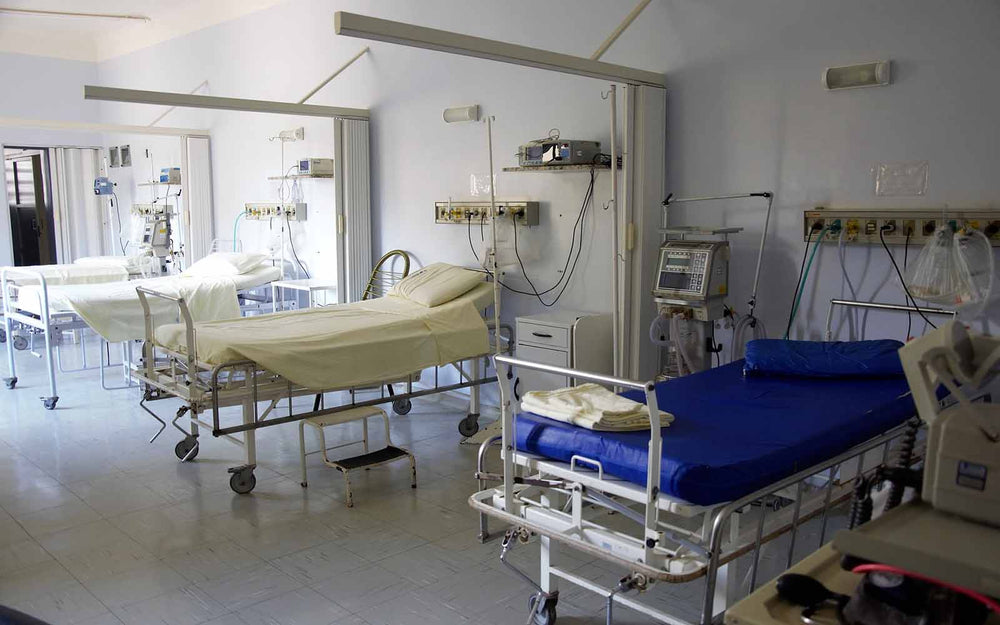
Indoor air quality can easily be overlooked. After all, airborne contaminants are not usually seen through the naked eye, and once we do notice them by smell, the damage has probably been done by then.
What’s more, is that while indoor air quality maintenance is crucial for any establishment to ensure the well-being of its occupants, it is even more important to maintain in hospitals and other healthcare establishments. This is also the reason why there are various industry standards that must be met when it comes to indoor air quality.
Sick Building Syndrome
The first health risk that we want to avoid is sick building syndrome. According to a research article, it is a condition that is brought about by staying indoors for a prolonged period of time with unhealthy conditions (such as poor air quality).
What’s worse, is that patients are not the only ones affected by this. They can cause non-specific health and comfort-related symptoms to your health workers as well which can lead to loss of focus, migraines, discomfort, and even respiratory health issues.
Patients Who Have Allergies or Asthma
Speaking of respiratory health issues, it’s sad that poor indoor air quality can make the existing conditions of your patients more severe. In fact, those that don’t have any underlying respiratory issues to start with can even develop them in the long run due to their prolonged exposure to poor indoor air quality combined with their weakened immune system.
Signs and Symptoms of Allergies
Here are some tell-tale symptoms of allergies developing from your patients caused by poor indoor air quality:
- Skin irritation
- Watery eyes and eye irritation
- Constant coughing and sneezing
- Wheezing and difficulty in breathing
If you notice your healthcare workers developing these symptoms together with your patients, then it is definitely a red flag that your facility needs to change, and fast.
The Acceptable Humidity Levels
There are different factors that can severely affect indoor air quality, from the improper disinfection procedures and patient handling causing patient-generated airborne contaminants to spread to the mishandling of waste products through carting and incineration.
However, the first step towards better indoor air quality is actually achieving acceptable humidity levels. You see, excessive moisture and water damage can be a harbinger of mold that releases deadly toxins and other contaminants. In fact, this damage can even accumulate beyond notice since mold can grow and develop in areas that are not easily noticeable such as underneath surfaces and dark corners.
Fortunately, there are equipment that you can get and install to achieve better humidity levels like humidifiers, air movers, and blowers. We recommend seeking professional help in order to determine the right size to get according to the size of your facility, and their proper placement.
How to Maintain Acceptable Indoor Air Quality
Aside from the gear that we have mentioned above, here are other steps that you can do in order to further improve and maintain acceptable indoor air quality levels in your health facility:
- Clean air ducts and dryer vents. This should be a part of your regular cleaning routine in order to prevent the development of mold and mildew.
- Invest in strong air filtration systems. Aside from cleaning air ducts and vents, make sure that air filters are also constantly cleaned and disinfected. They are your first lines of defense in trapping various air contaminants like dust and dirt. Don’t just use standard air filters as well. Instead, we recommend high-efficiency particulate arrestance (HEPA) air filters and ultra-low particulate arrestance (ULPA) air filters to ensure better filtration efficiency.
- Improve air ventilation. It wouldn’t hurt to let fresh air into your facility, especially after general disinfection where you have used cleaning products with harsh chemicals and strong odor.
- Look into improving your waste management and disposal. Medical waste should never be exposed especially when being carted around. The exhaust systems of your incinerator must also be checked and repaired immediately if needed.
- Install disinfection stations. It can be as easy as having alcohol and hand sanitizers in every corner so patients, workers, and carers alike can constantly keep their hands clean and prevent the spread of any kind of infection, even non-airborne ones.
- Invest in your workers’ personal protective equipment. This will keep them protected against patient-generated airborne contaminants in general and will prevent them from spreading it to other areas and common rooms.
Conclusion
There are definitely other ways that you can do in order to improve your healthcare facility’s indoor air quality aside from the methods and tips that we have shared in our article. However, implementing them already gives you a solid foundation where you can start with and simply build upon in the future.
Remember, it’s not only patients’ healths at stake, but your workers too and it is your responsibility as its owner to ensure their health and safety at all times.
References:
https://www.csemag.com/articles/indoor-air-quality-in-hospitals/
https://www.healthcarebusinesstoday.com/the-importance-of-quality-indoor-air-in-hospitals/
https://www.ncbi.nlm.nih.gov/pmc/articles/PMC2796751/
https://www.aafa.org/indoor-air-quality/
Author’s Bio: Megan Jones is an author who works with AerIndustries. She mostly writes about home remodeling, healthy living and wellness, and related topics. Having a huge experience in indoor air quality maintenance, Megan has gained some valuable knowledge, which she is now actively promoting.

